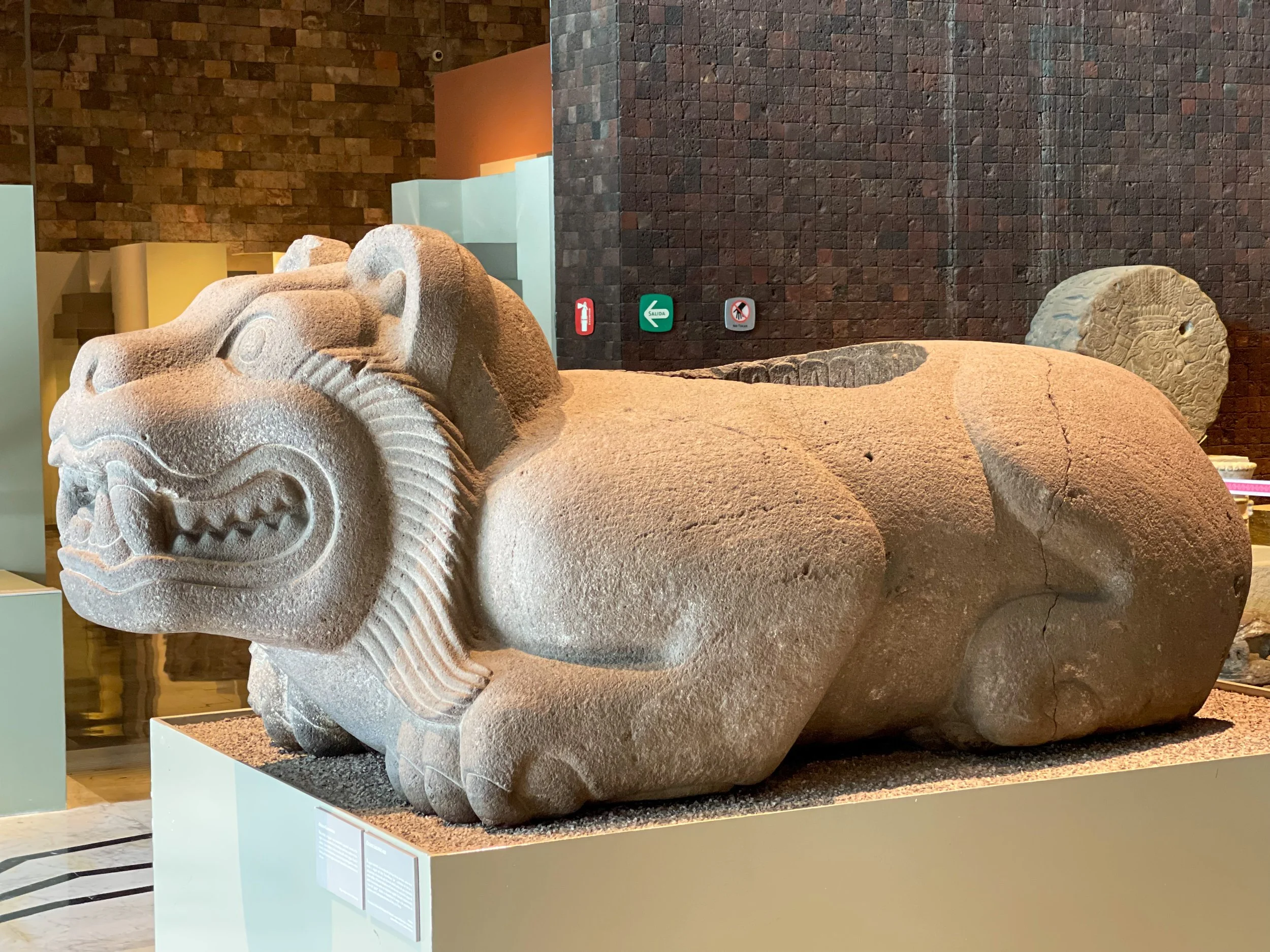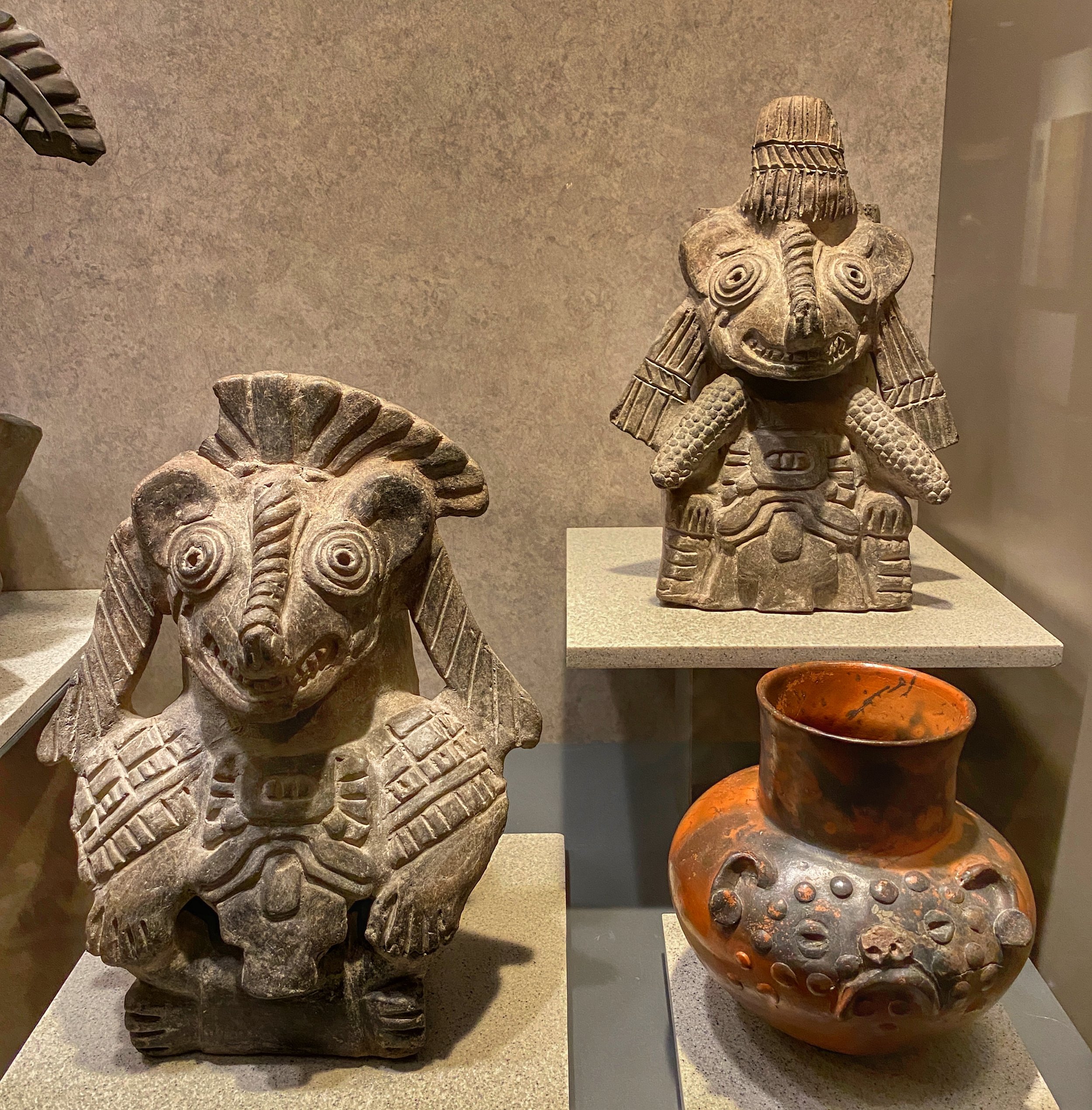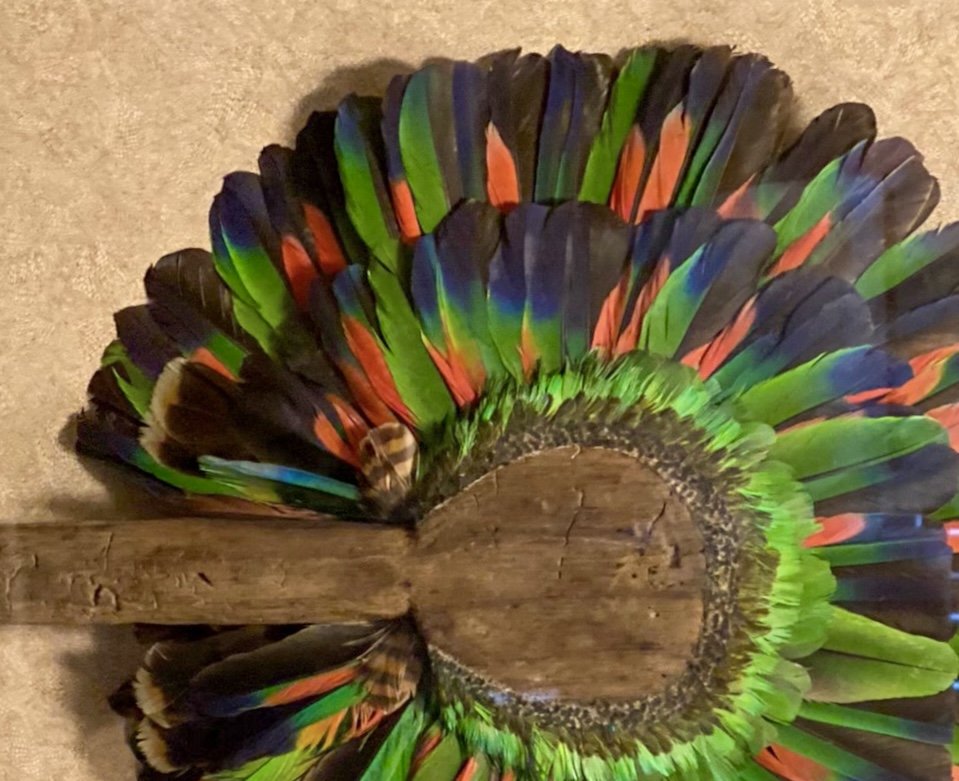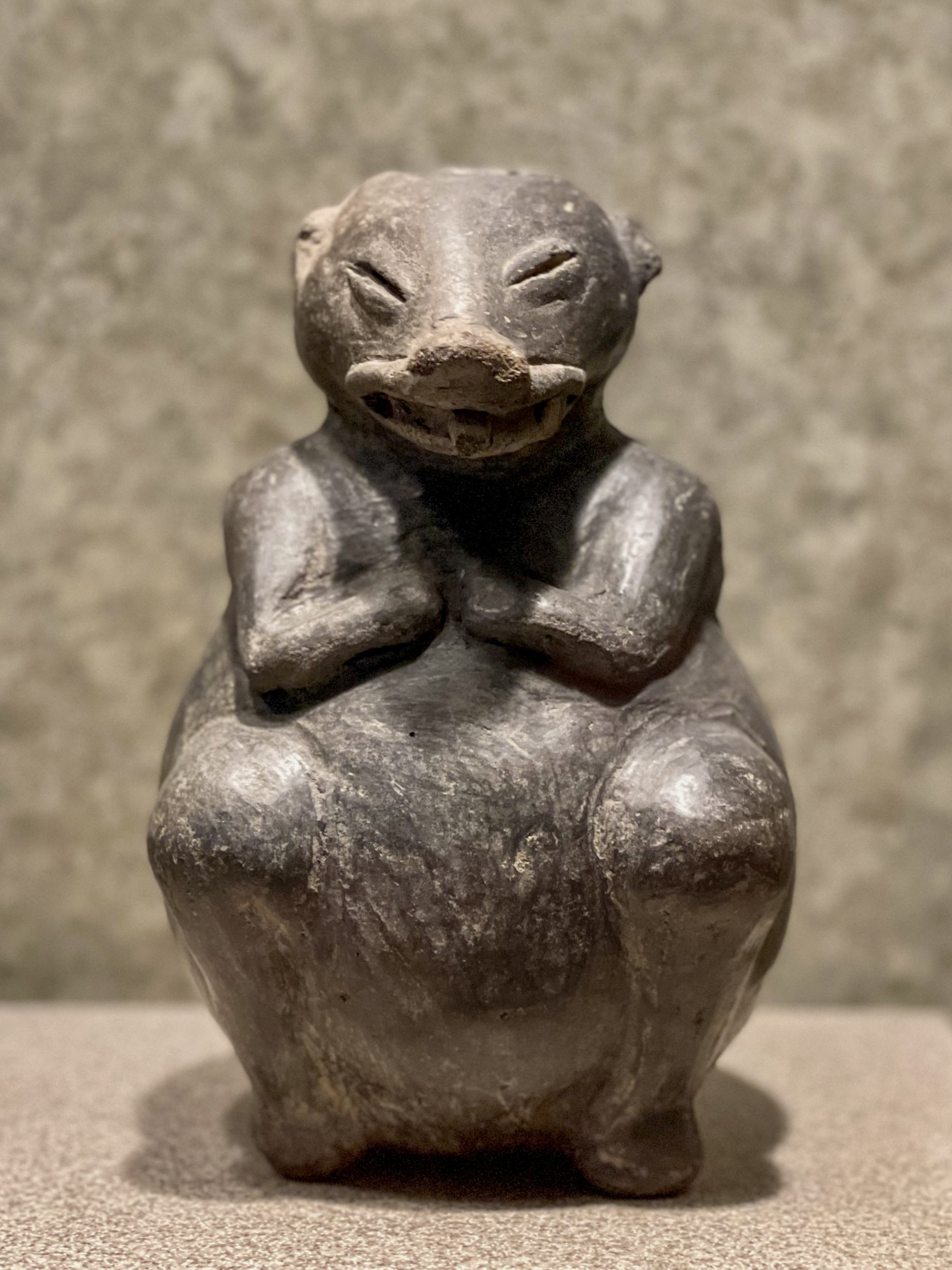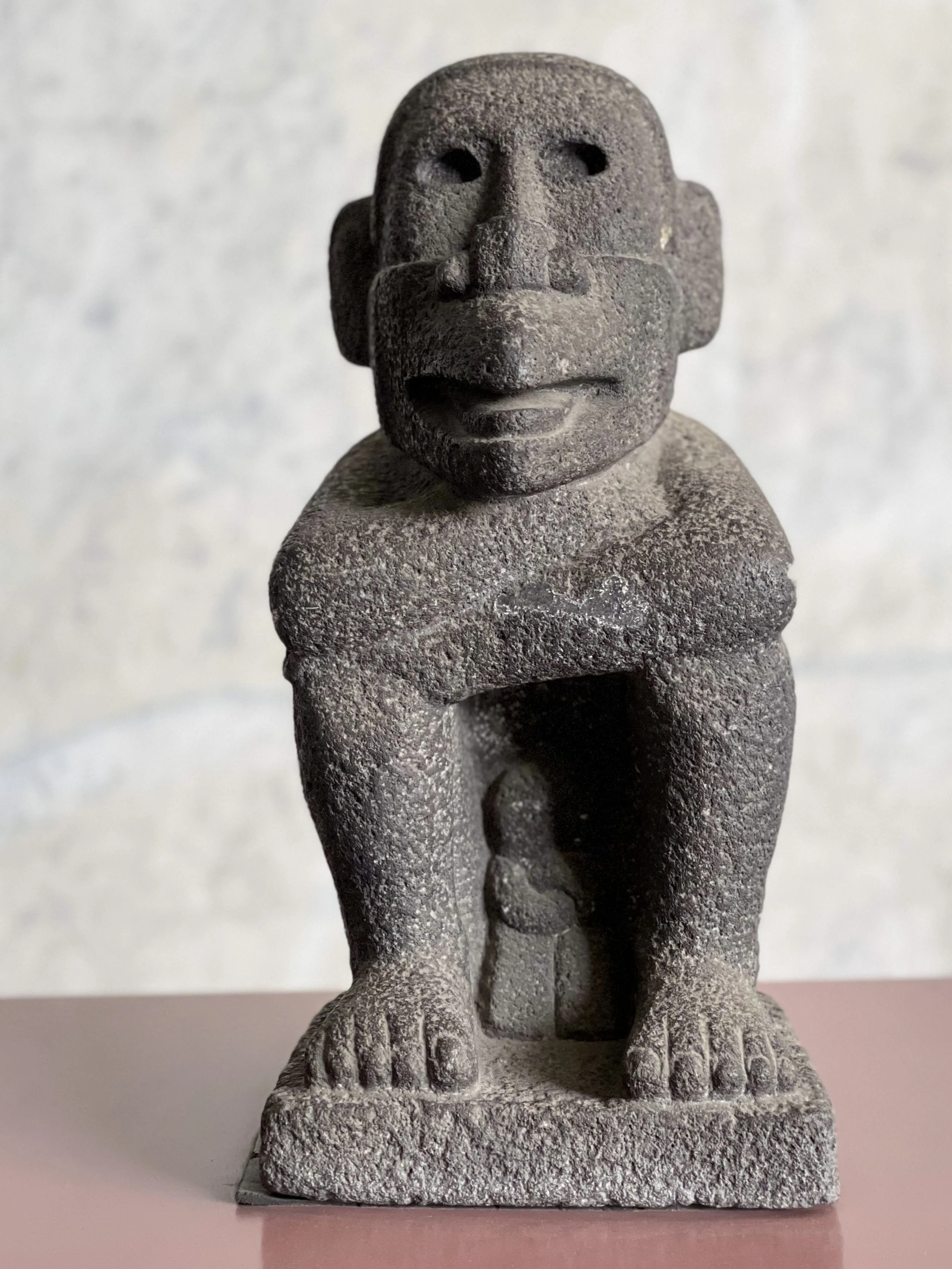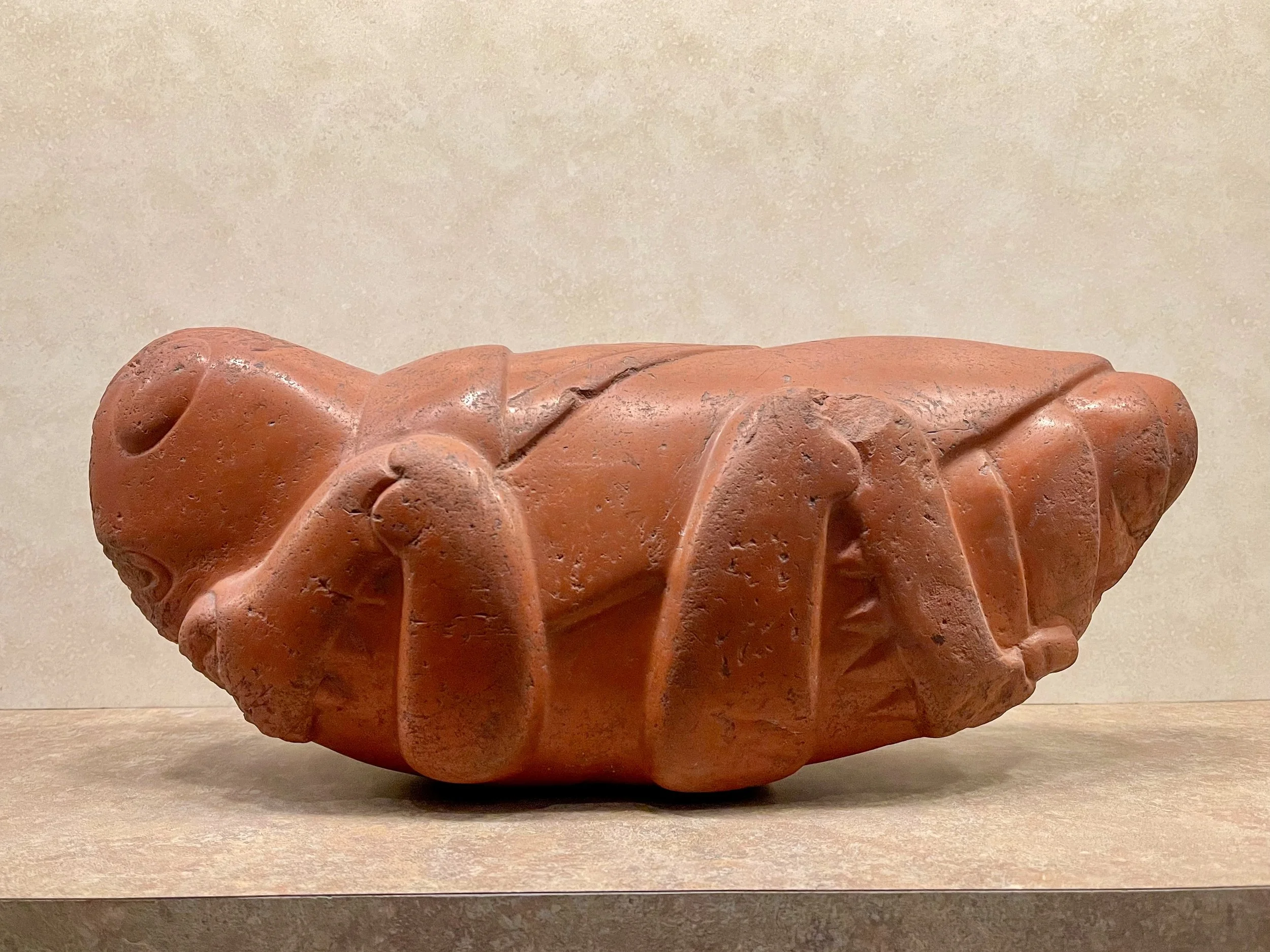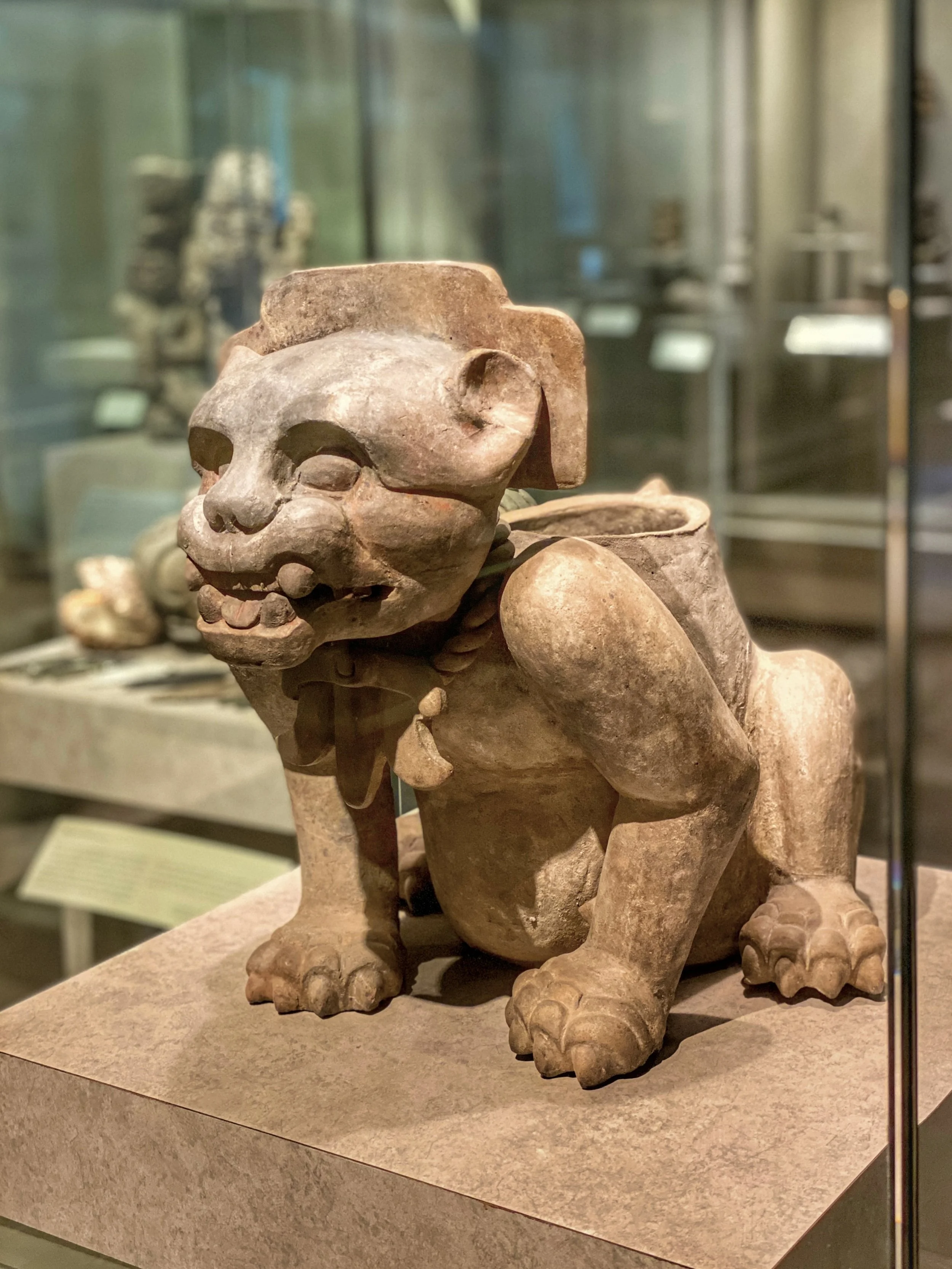The meanings behind monkeys, jaguars, ducks, bats, dogs and other animals in Mesoamerican myths as depicted in pre-Columbian artifacts at the National Museum of Anthropology in Mexico City.
A lot of the exhibits at the National Museum of Anthropology in CDMX depict animals — each of which held symbolic meaning for the ancient peoples of Mexico.
Something that’s always fascinated me about ancient cultures are the similarities in beliefs with other civilizations around the world. Despite being oceans apart, many shared highly developed civilizations and a deep reverence for the natural world.
We saw this in action during our last visit to Mexico City, when we finally made it to the Museo Nacional de Antropología. The scale and scope of the galleries at the museum is dizzying. Wally and I don’t like to overdo it, so we spent half a day just wandering through the first floor. One of the highlights for me was the large number and variety of Mesoamerican animal-shaped effigy vessels on display. Like other ancient societies, the pre-Columbian peoples believed that certain animals embodied a spiritual energy in which sacred beings manifested themselves.
“Conquistadors developed such an appetite for Xoloitzcuintli Mexican hairless dogs that they nearly ate them into extinction. ”
These ritual objects were not used in everyday life; they were often placed in tombs as burial goods. Animals played a key role at all levels of society and symbolically linked the three cosmic realms of the universe: the heavens, earth and underworld.
Aztec cosmology posited that time is cyclical — and that we’re in the Fifth Sun, the final cycle of the world.
Here Comes the (Fifth) Sun
According to the Aztec legend of the Fifth Sun, time is cyclical. Four suns, or eras, have passed, created by a different deity and successively destroyed. Each cycle included inhabitants who died or transformed into various creatures, including monkeys, turkeys, dogs and fish. Our present world happens to be the Fifth Sun.
Brightly colored feathers were used in religious ceremonies.
The pre-Columbian people used animals for a variety of purposes. Parrots and macaws, for example, provided a source of food as well as prized blue-green plumage used to adorn headdresses. However, animals also held great symbolic significance. They served as cultural and cosmic metaphors based on their habitat and natural features.
Ducks were particularly holy to Mesoamericans, as they moved between three realms: water, the sky and land.
Just Ducky
Birds symbolized the celestial realm, the sun and moon in particular, and were considered messengers between the natural and spiritual worlds.
Ducks were particularly holy, perhaps because they ticked all the boxes: They can fly, walk on land and dive underwater, possessing the ability to travel freely between these different spheres.
Ducks and related birds were also associated with the wind god Ehécatl (pronounced “Eh-heh-ka-tul”), one of the avatars of Quetzacoatl, the great plumed serpent. The deity was frequently portrayed with a duckbill-like appendage on his face, which he used to summon the winds.
The Maya considered bodies of water to be pathways to the Underworld. Ducks and other waterfowl were ritualistically sacrificed, eaten and used to ward off demons.
This little guy represents a coatimundi, which figures in a Mayan myth that involved a decapitated head in the Underworld.
Coati Encounters of the First Kind
The coatimundi, or coati, are members of the raccoon family. They have distinct mask-like markings on their faces, resembling a combination of kinkajou, anteater, raccoon and bear cub.
In the Popol Vuh, the sacred text of the Maya, a bat rips off the head of Hunahpu, one of the Hero Twins, and takes it to the ball court of Xibalbá (the Underworld) to be used in place of a rubber ball. A coati fashions a fake head from a calabash squash and places it on the shoulders of the headless hero. Hanapu’s brother Xbalanque places Hanapu’s head back on his shoulders, and the brothers succeed in defeating the Lords of Xibalbá.
Monkeys represented the good (luck and joy) and the bad (immorality).
Monkeys: Sacred Simians
Spider and howler monkeys are the two most common species native to the tropical lowlands of Mexico. Playful and social in nature, these nimble primates live in the high forest canopy and are mankind’s closest living relative. They were symbols of good fortune and joy, as well as pleasure and immorality — the latter of which was punishable by death. Monkeys were domesticated and kept as pets by both Zapotec and Aztec nobility and weren’t used for food or sacrifice.
The “leftovers” of the Second Sun cycle of the universe were turned into jabbering monkeys.
Ehecatl, the Aztec god of the wind, was associated with monkeys.
Monkeys were also associated with the Aztec wind god Ehécatl. According to the legend of the Fifth Sun, the disobedient survivors of the Second Sun, whose cataclysmic end included hurricanes and floods, were transformed into monkeys by Ehécatl. Deprived of the ability to speak, they were condemned to emit meaningless noises for the rest of their existence.
A person’s spirit would hold onto a Xoloitzcuintli dog’s tail to be guided through the Underworld.
Dogs Truly Are Man’s Best Friend
Before the Chihuahua became the most popular dog breed from Mexico, there was the hairless Xoloitzcuintli (pronounced “Show-low-eats-queent-lee”). This breed got its name from Xolotl, the god of lightning and death, and itzcuintli, dog. To the ancient Aztec and Maya, the canine was created by Xolotl to guard the living and guide the souls of the dead through the perils of Mictlán, the Underworld. Deceased souls held onto the dogs’ tails as they led their owners through the afterlife. They were also bred as a source of food — in fact, the conquistadors developed such an appetite for them that they nearly ate them into extinction.
The most common depictions of Xoloitzcuintles take the form of small ceramic vessels known as Colima dogs for the modern state of Mexico where they are commonly found. More than a few of these red clay objects are depicted with chubby bodies — this may be an indication that they were fattened up to be eaten.
Frida Khalo and Diego Rivera owned a brood of Xolos, and Wally and I saw a few sunning themselves at el Museo Dolores Olmedo, which houses a large collection of works by this famous duo.
Grasshoppers were associated with agriculture and fertility — but could also mean destruction.
The Grasshopper: the Insect That Sings for Its Supper
The name of Chapultepec Park, where the Museo Nacional de Antropología is located, comes from Náhuatl for “Hill of the Grasshopper.” This hill rises from the center of the park, was a sacred place for the Aztec and is where Chapultepec Castle stands.
Grasshoppers were associated with agriculture and fertility and were associated with the period following the annual rainfall, which brought an abundance of the insects.
In addition to their symbolic importance, the Aztec snacked on chapulines, cooking them on clay surfaces with spices.
To the Mexica, they represented the duality of abundance vs. destruction: Drought triggers the solitary grasshopper to become social, changing color from green to yellow and black. Under such conditions, they move in swarms, devouring crops and vegetation.
Bats were paired with the Underworld, which was accessible via the caves they live in.
Bats Out of Hell
Bats are nocturnal creatures that travel the sky by night and hide in caves by day, which Mesoamericans believed were portals to the Underworld.
The stuck-out tongue on this bat statue hinted at the creature’s blood-sucking nature and connected it to the practice of human sacrifice.
The Zapotec venerated the god Camazotz, who had the head of a bat and was associated with night, death and sacrifice. Most likely due to the sanguinary diet of the vampire bat, native to most regions of Mexico, where it feeds on the blood of mammals, the creature became associated with rites of bloodletting and human sacrifice practiced to honor the gods and secure bountiful harvests.
A common symbol in ancient Mesoamerica, the jaguar was linked to power and protection from evil.
Jaguars Hit the Spot(s)
The jaguar was one of the most important sacred symbols of power, ferocity and protection from evil. According to Mexica lore, a jaguar and an eagle both sacrificed themselves to bring light to the world, and in doing so became gods.
Jaguars were believed to have the ability to travel between the worlds.
The Maya connected the jaguar’s spots with heavenly lights.
The jaguar is closely associated with the “night sun” (the sun during its nightly trip through the Underworld) and darkness as well. As such, the big cat was thought to have the ability to move between the worlds of the living and the dead. The Maya venerated the feline, seeing heavenly lights in its spots. –Duke
RELATED: Death Cults of Ancient Mexico
